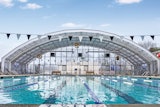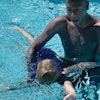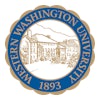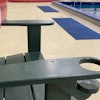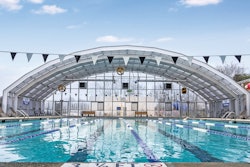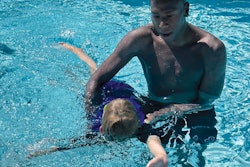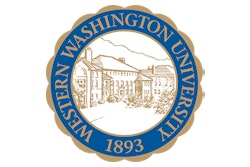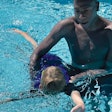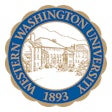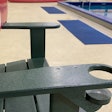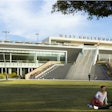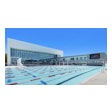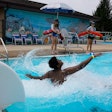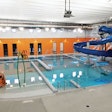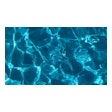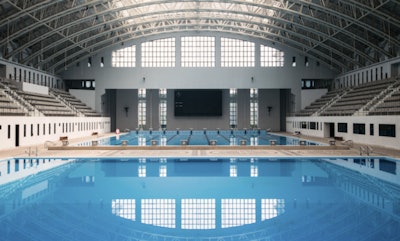
The following content is supported by one of Athletic Business's advertising partners. To learn more about sponsored content, click here.
How University Aquatics Operators Can Build Swimmers' Trust in the Next Normal
After the upheavals of 2020, the best way aquatic operators can rebuild swimmers’ trust is by acting instead of reacting. With so much unknown, how exactly are leading universities alleviating concerns?
Since the pandemic began, over 250,000 COVID-19 cases have been reported at over 1,600 colleges. With the threat of becoming another statistic, students, athletes and faculty are in desperate need of assurance and safe activities.
To welcome swimmers back to an aquatics facility that’s better, healthier and safer than how they left it, here are the top three key opportunities that aquatic operators are acting on.
1. Address Air Quality
We all use our senses to determine how safe our environment is, and swimmers and faculty don’t want to smell a pool before they see it. What swimmers once tolerated, they won’t anymore. To measure up to these new expectations, aquatics operators have to make tangible improvements that swimmers not only hear about but also experience for themselves.
As concerns over airborne disease transmission are at an all time high, leading university aquatics operators are providing cleaner, fresher air quality as a means to build swimmers' trust. Contrary to popular belief, pools should not smell. The “chlorine” odor that lingers in aquatic facilities doesn’t even come from chlorine, but rather from chloramines (combined chlorine). Chloramines are the disinfection by-product (DBP) of chlorine interacting with organic material, like lotion, sweat or perfume. With the extended time that student athletes spend in the pool, exposure to DBPs can also cause long-term health problems, such as allergies, asthma and Lifeguard Lung.
To improve air quality and keep DBPs under control, Aquatics Director, Donna Hodgert, and other top university aquatics operators have added Clear Comfort’s Advanced Oxidation (AOP) supplemental sanitation. Beyond the capabilities of traditional pool chemicals, Clear Comfort is third-party proven to reduce up to 90 percent of DBPs.
“I would say our Natatorium is now one of the top five aquatics facilities in the nation in terms of air quality and water quality, thanks to Clear Comfort,” Hodgert said. “You definitely notice walking on the pool deck that there is absolutely no chlorine smell.”
2. Provide Gentler, Safer Water
In addition to causing a noxious chemical smell, DBPs also cause skin irritation, red eyes and dermatitis. Whether we’re in a pandemic or not, athletes want to swim in healthy, fresh-feeling water that enables them to rest and recover comfortably.
Austin Ringquist, a multiple-time USA Swimming Nationals qualifier and Assistant Aquatic Director at the University of Arizona, explains, “Some of the most common memories I have include taking many showers to wash of the excess chlorine, applying face and body lotion constantly, and the inevitable itchy skin despite the lotion.”
However, Martin Tuck, Director of Aquatics at the University of Arizona, saw an opportunity to improve swimmers’ experiences and acted on it.
“Since installing the Clear Comfort AOP system, our swimmers no longer feel irritated after spending time in the pool and our water clarity is highly improved,” explained Tuck. “We’ve significantly reduced our chemical consumption, which means we’re spending less money on chlorine and swimmers aren’t exposed to as many toxins.”
3. Make Lemonade
While managing time and budget constraints, aquatics operators can improve the long term health of their facilities. Smart operators are using downtime for proactive repairs and upgrades.
Leading aquatic facilities have found new ways of protecting swimmers against recreational water illnesses (RWIs) that are harder to kill than COVID-19.
A common and hard-to-kill RWI is chlorine-resistant Cryptosporidium, which causes a severe gastrointestinal illness that can lead to hospitalization. Leading aquatics facilities have leveled up their RWI protection with supplemental or secondary sanitation, like Clear Comfort’s AOP or UV.
“I highly recommend the Clear Comfort system,” says Hodgert. “It’s a system I can maintain myself, whereas our UV system in our older pool needs service professionals to come twice a year to work on it.”
While many have avoided UV based on cost, complexity and maintenance time, leading methods, like Clear Comfort’s AOP, are cost effective, simple to maintain and are third-party proven to destroy 99.99 percent of Crypto.
In order to adapt to the unexpected, you need tools that tackle the hard work for you. By implementing supplemental sanitation with powerful AOP oxidation, you’ll be able to respond faster to whatever comes your way, knowing that your pool water is taken care of.
Actions Speak Louder Than Reactions
As students and athletes return, there will still be uncertainty over the future health risks and the safety at campuses. Change is the new norm and aquatic operators have an opportunity to build trust by making prudent changes. New methods and technologies, like Clear Comfort’s AOP, are opening new doors for operators looking to provide a space swimmers can trust.
To learn more about how AOP can reliably help you manage through these challenging times, please click here.









